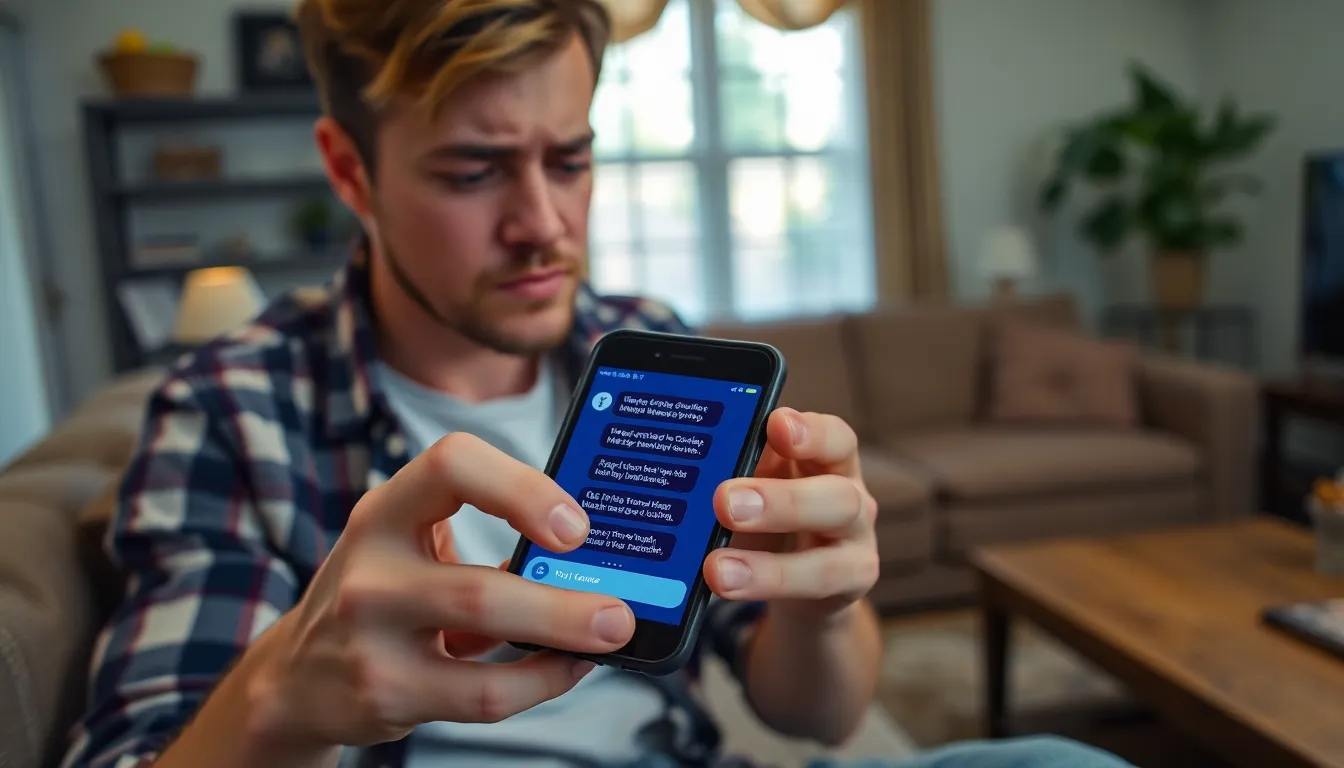Table of Contents
ToggleImagine this: you’re all set to send a snazzy message with rich media, only to be greeted by the dreaded notification that “RCS has been disabled by your carrier.” It’s like preparing for a grand feast and finding out the chef forgot the main course. Frustrating, right?
Understanding RCS Technology
Rich Communication Services (RCS) represents a significant advancement in messaging technology. Its goal is to enhance communication with features that go beyond traditional messaging.
What Is RCS?
RCS is a protocol that allows users to send multimedia messages efficiently. It supports larger file sizes, high-quality images, and videos. End users enjoy features like read receipts and typing indicators that weren’t available with traditional methods. Many smartphones come equipped with RCS capabilities, enabling seamless communication across networks. By updating messaging apps to support RCS, carriers can provide enriched interaction for users.
How RCS Differs From SMS and MMS
RCS brings advantages that standard SMS and MMS lack. SMS supports only text messages up to 160 characters, while RCS allows significantly longer messages, including media content. MMS handles multimedia but limits file sizes and lacks interactive features. RCS offers chat-like experience with group messaging, location sharing, and deeper integration with apps. These enhancements encourage richer conversations, creating a more engaging environment for users.
Common Causes of RCS Disabling

Several factors can lead to the message “RCS has been disabled by your carrier.” Understanding these causes can help identify potential solutions.
Carrier Restrictions
Carrier restrictions often prevent RCS from functioning correctly. Some carriers enforce limitations based on users’ plans or regions. Specific plans do not support RCS features at all. Additionally, carriers may disable RCS for network-related reasons. Users could experience incompatibility when roaming internationally if the carrier does not support RCS in that country. It’s essential to verify with the carrier about RCS availability on specific plans.
Device Compatibility Issues
Device compatibility issues frequently disrupt RCS functionality. Not all devices support RCS due to hardware or software limitations. Users with older smartphone models might find that RCS features aren’t available. Similarly, outdated operating systems can hinder access to RCS capabilities. The messaging app used must also support RCS to enable its features. Ensuring that device software is up to date can alleviate some compatibility problems.
Troubleshooting RCS Issues
Troubleshooting RCS issues can help restore messaging capabilities and enhance user experience. Follow these steps to address common problems effectively.
Steps to Check RCS Settings
Checking RCS settings often resolves many issues. Start by opening the messaging app and locating settings. Look for a section labeled “Chat features” or “Advanced settings.” Ensure that RCS is enabled. If there’s an option for “Enable chat features,” toggle it on. Additionally, verify the phone number used for registration. Testing with different Wi-Fi or mobile data connections can also help identify connectivity issues. Consider restarting the device after making changes to settings for good measure.
Fixing Carrier-Related Problems
Carrier-related problems can hinder RCS functionality. Contact the mobile carrier to confirm whether the account supports RCS services. Identifying whether the user’s plan includes RCS features is essential. If traveling internationally, roaming settings may restrict service usage. In such cases, expressing the desire to enable RCS during international usage can prompt support alternatives. Updating the device’s software may eliminate some compatibility concerns. Checking for regular carrier updates within device settings often resolves underlying issues, leading to improved service.
Alternatives to RCS
When RCS isn’t available, users can explore a variety of alternatives to maintain communication.
Using Other Messaging Apps
Many users turn to other messaging applications. WhatsApp offers end-to-end encryption and multimedia sharing. Telegram supports large file transfers and group chats. Viber includes voice and video calling features. Signal emphasizes privacy while providing basic messaging capabilities. Each of these applications has its own features that cater to different preferences. Users can download these apps from app stores, making it a simple transition.
Relying on SMS and MMS
Text messaging through SMS remains a reliable option. It allows users to send and receive messages without the need for internet access. MMS enables the sharing of multimedia, such as photos and videos, though file sizes are limited. Users should keep in mind that SMS and MMS lack advanced features found in RCS. Despite these limitations, SMS and MMS ensure that message delivery occurs swiftly and efficiently. Users can always rely on these traditional methods for essential communication needs.
Experiencing the message “RCS has been disabled by your carrier” can be frustrating for users eager to utilize advanced messaging features. Understanding the underlying technology and common issues can empower users to troubleshoot effectively.
By checking device compatibility and confirming RCS support with their carrier, users can often restore functionality. If RCS remains unavailable, exploring alternative messaging apps or relying on traditional SMS and MMS can ensure seamless communication. Staying informed about RCS developments and carrier updates will enhance the overall messaging experience.

